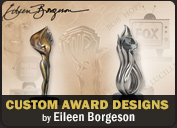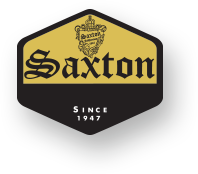How Custom Metal Trophies Are Made
We’ve been talking a lot lately about the history of trophies, our favorite trophies and awards, and whether or not participation trophies for kids are a good idea, but you might be wondering how trophies are made. The answer is with a lot of hard work and a mixture of new technologies and traditional metal crafting techniques that have been around for centuries. But we couldn’t make the trophies we do without you as well.
When we’re talking about custom trophies, we don’t mean less expensive plastic or toy metal trophies, but things like corporate awards, industry awards, and trophy cups of the sports world. We mean trophies made out of bronze with other precious metal finishes like gold and silver that can be engraved or that might feature custom figurines and other sculpted details. When you pick up the trophies you’ve ordered or when you see an award given out at work or on television, what went into that award? How do bronze trophies go from metal to work of art?
1. The Accomplishment
You might be surprised to see this one. But the truth is, without some kind of accomplishment whether it’s winning the game, being the best at something in your field, or to celebrate a long career, you can’t have a trophy without some sort of worthwhile accomplishment. So truthfully, the work that goes into any trophy or award starts with a person or group of people and the hard work they had to perform in order to win the championship or accomplish something that is worthy of an award.
2. The Idea
Once you or someone has accomplished something truly great and worthy of recognition, the next step in any custom made trophy is your idea for the award’s design. You might already have something in mind. It could be something simple and traditional like a victory cup or bowl. Alternatively, you might meet with a designer or artist to come up with a design for your bronze trophy that’s either inspired by your recipient or by your sport or industry or you might want a more abstract look that’s sculptural and modern.
3. The Artisans
Every trophy is unique. Depending on your trophy’s design, you might have a designer, an engineer, and several different craftsmen at various machines, each one carefully ensuring your trophy is perfectly crafted and that it matches your idea. The team of people who are creating your trophy might even have a sculptor on it who came up with a design for you. From shaping to finishing, to engraving and even the base of your trophy, a truly well-made trophy has more than just one artisan assigned to its creation.
4. The Metal
We believe the best custom metal trophies are made using the best metals, specifically solid jeweler’s bronze, brass or zinc. Bronze is actually an alloy of copper and tin. It’s usually about 88% copper and 12% tin or tin mixed with other metals, or just other metals without the tin. It can sometimes be confused with brass which is another copper alloy, but brass typically contains less copper and is usually mixed with zinc rather than tin.
High-end custom trophies are often made of bronze or brass. As bronze ages, it goes from a warm gold color to a burnished golden brown coppery hue. Brass, on the other hand, is a more vibrant gold color, but it can turn green as it ages and tarnishes. However, there are finishes that can help protect trophies from tarnishing whether they’re made of bronze or brass. Other zinc alloys, especially for die-cast metal statuette trophies that are plated with vibrant colors.
Contrary to popular belief, it’s extremely rare for a trophy to be made of pure gold or silver. Like copper, silver is a soft metal and gold is too expensive for most people to want to create a trophy of sold gold. Most trophies are plated and while you might think the Oscar statuette is solid gold, it’s actually gold plated.
5. The Process
There are several different processes to craft a custom metal trophy. Unlike cheaper trophies, custom metal trophies don’t use any plastic and the individual parts of the trophy such as its base and any cup or figures are crafted separately.
Loving cup style trophies won’t use all of the same techniques that a cast figurine style trophy does. Although there will be some crossovers. We’re not going to get into every single detail of the trophy process. However, we will cover two of the basic methods for shaping bronze and other metals into custom trophies.
Metal Spinning: Metal spinning is typically a cold process. There are several different techniques for spinning metal including CNC Spinning, Hand Spinning, Hydraulic assisted spinning, and hot spinning. Metal spinning is a technique where flat sheets of metal, often bronze or brass, are shaped into things like bowls, cups, rounded trophy bases, and other elements. It’s a technique that’s very similar to spinning clay for pottery and manual spinning methods are based on traditional trophy crafting methods. Of course, metal spinning can also be machine aided with the use of lathes, but even machine spinning techniques require a skilled craftsperson.
Casting: Casting metal is a hot process. It involves the making of and use of custom molds and is most often used in creating figurines and forms that you can’t produce using a technique like metal spinning. The metal for the trophy is heated to an extremely high temperature and cast into a mold. When the metal hardens the individual components can be put together. and any necessary finishes can be applied.
6. The Finish
The finishing touches to any custom trophy may include further metal plating such as silver plating or gold plating, and zinc die-cast trophies might be plated with their final color or colors. Some bronze trophies are even plated with aged bronze to give them a copper tone and more antique feel.
After that, it’s time for your custom trophy to be personalized with engraving. You might think this part isn’t complex. But remember, engraving involves writing on metal in a way that is beautiful. Any mistakes during the process will be obvious and there’s absolutely no room for any errors. Engraving can be done by hand, rotary, or laser. Laser engraving allows for extreme precision than hand engraving. Laser engraving also tends to last longer than engraving metal by hand.
7. The Event
Now that your custom trophies are finished and they’ve been delivered it’s time for your presentation event. While trophy makers have nothing to do with planning your event and we might not know the recipients of your awards, we still feel a sense of pride and immense happiness when we see the looks on the faces of the award recipients as they hear their name called, or make that winning play, or step up to a podium to give their acceptance speech. No matter how well known or how humble a trophy recipient is, every trophy is a symbol of years of hard work and dedication. That’s why a description of how custom metal trophies are made wouldn’t be complete without including this final step in the process.
Final Thoughts
We know we haven’t included every little detail of every piece of the custom trophy making process. We also realize that including steps like the accomplishment, the idea, and the artisans, as well as your event, might not be the first things you were thinking of when you first wondered how trophies are made.
However, without you and your accomplishments, as well as your ideas, no trophy would exist. We wouldn’t have been able to craft the custom trophies we’ve created and continue to create without you. While procedures like metal spinning, metal casting, engraving, and engineering are all important parts that go into manufacturing every custom trophy, your ideas, your award recipient, and their accomplishments, as well as your award presentation are crucial elements in every trophy we make here at Saxton Industrial.
Categorised in: Uncategorized






